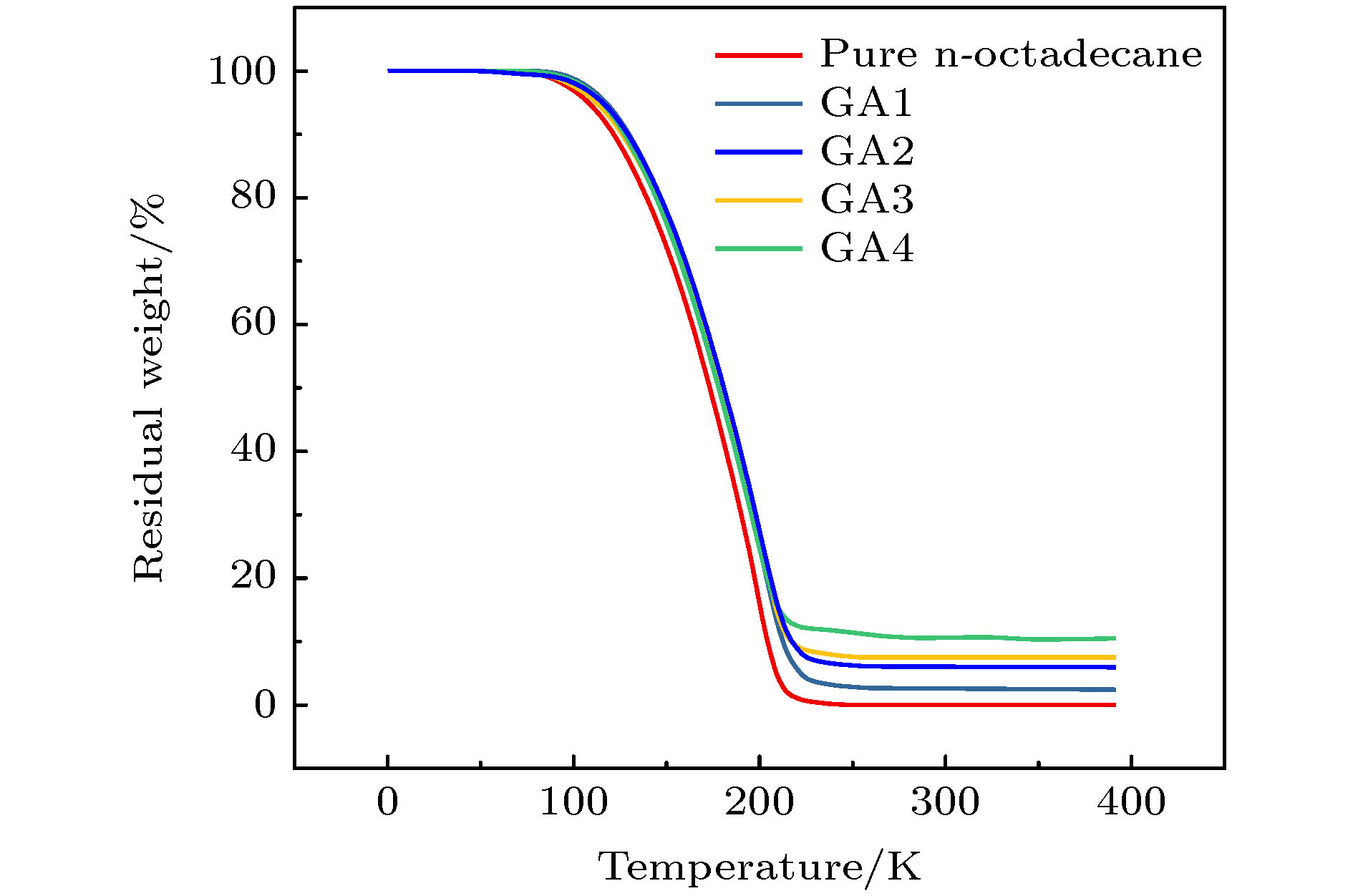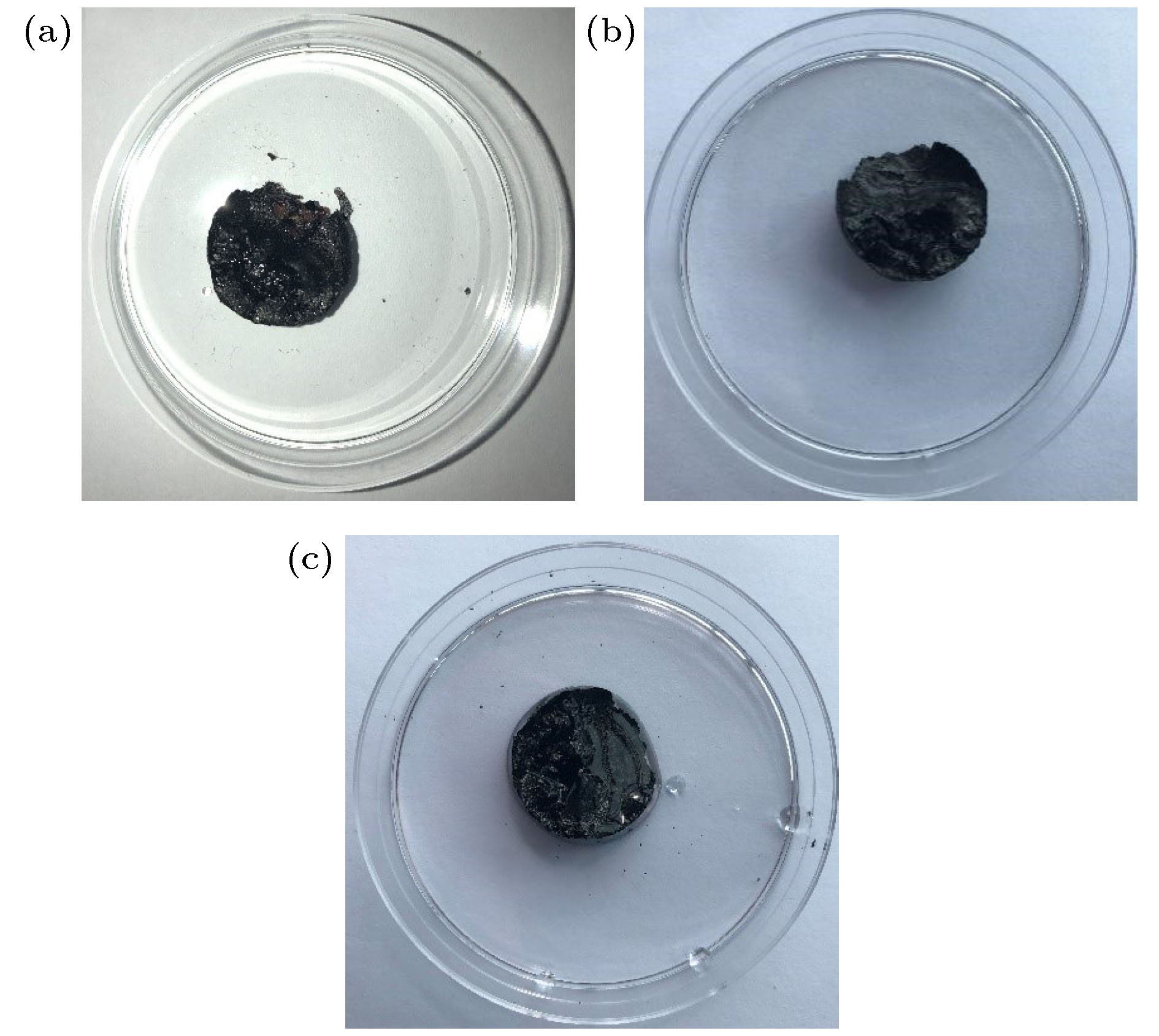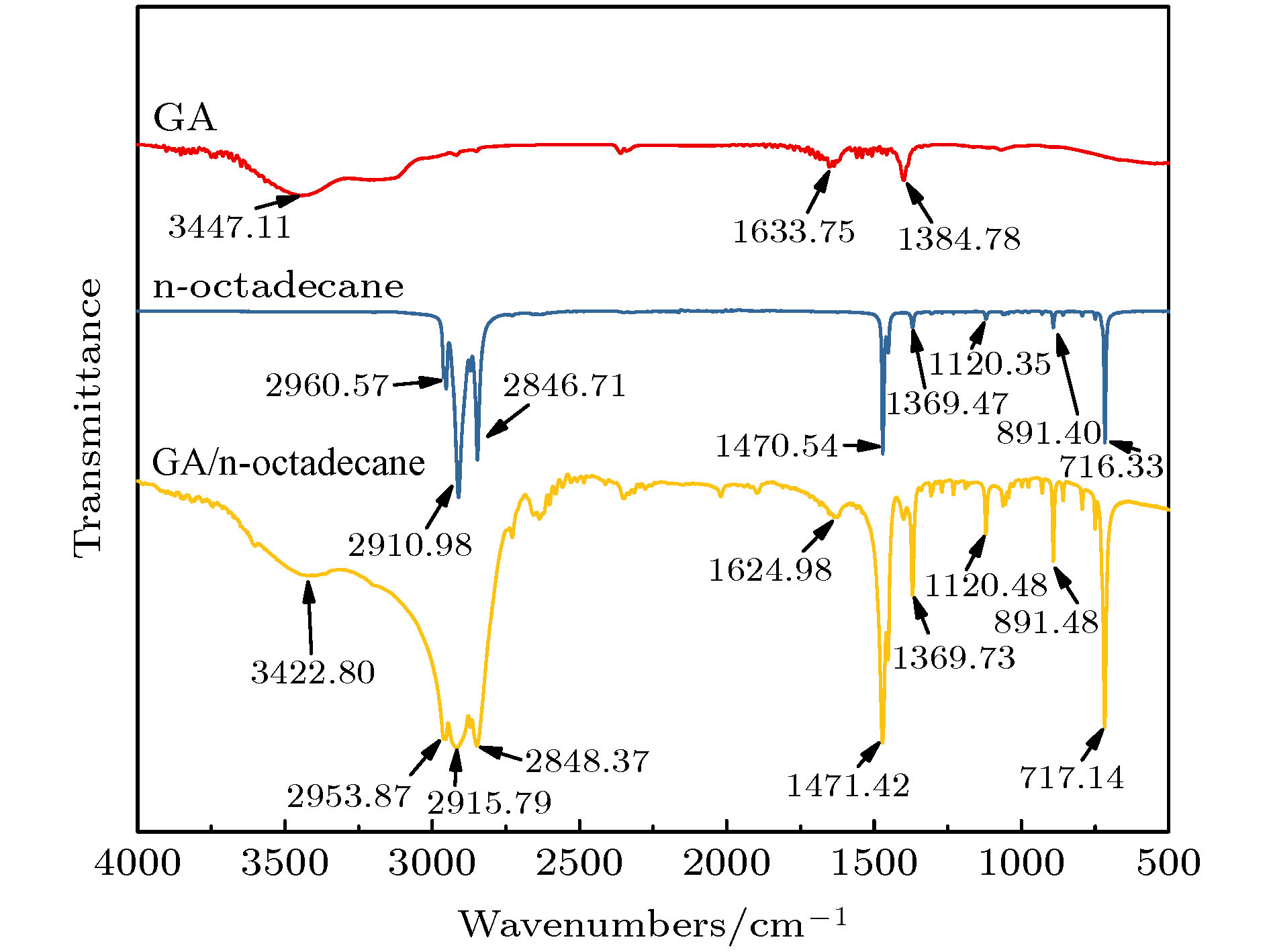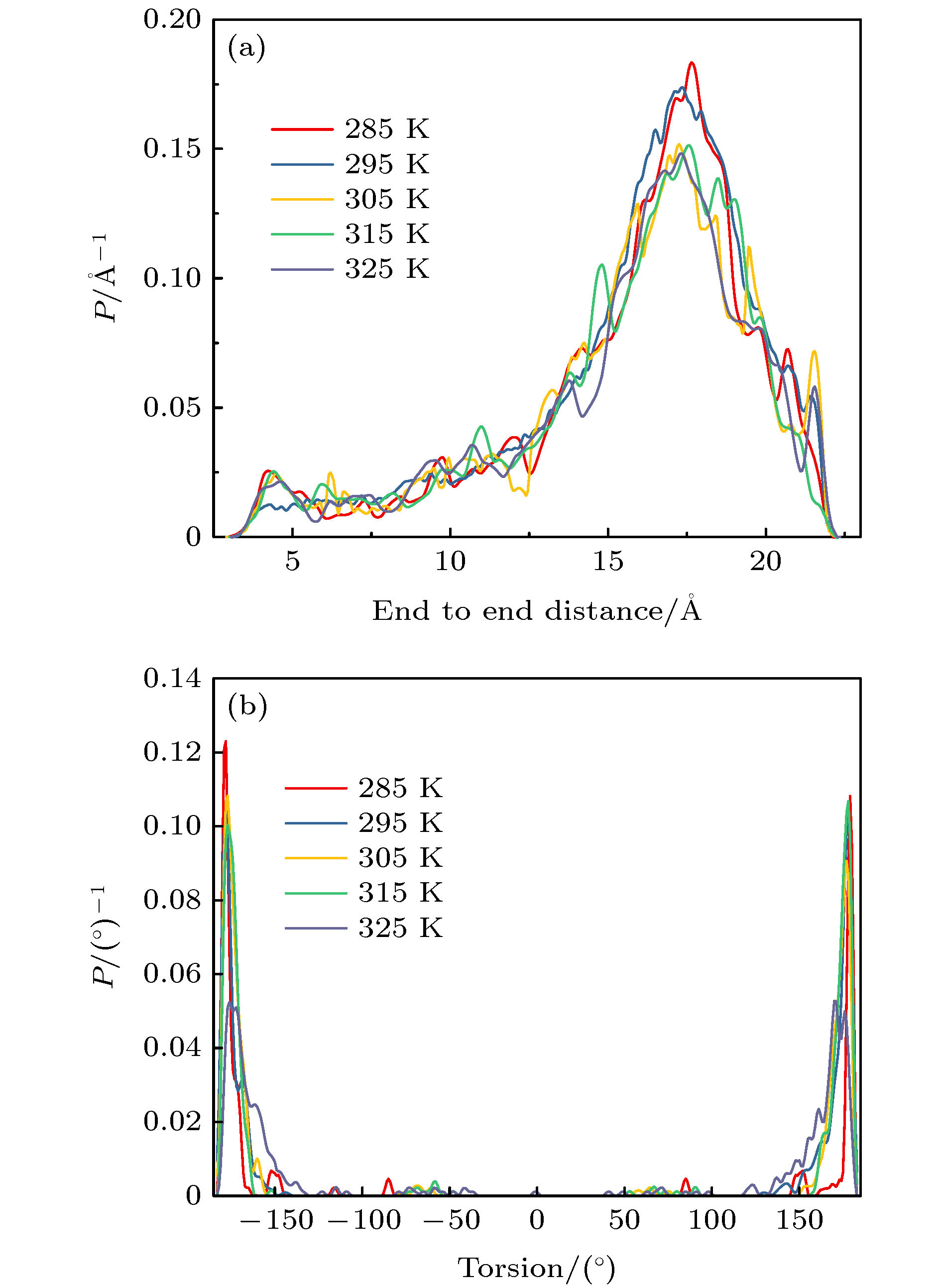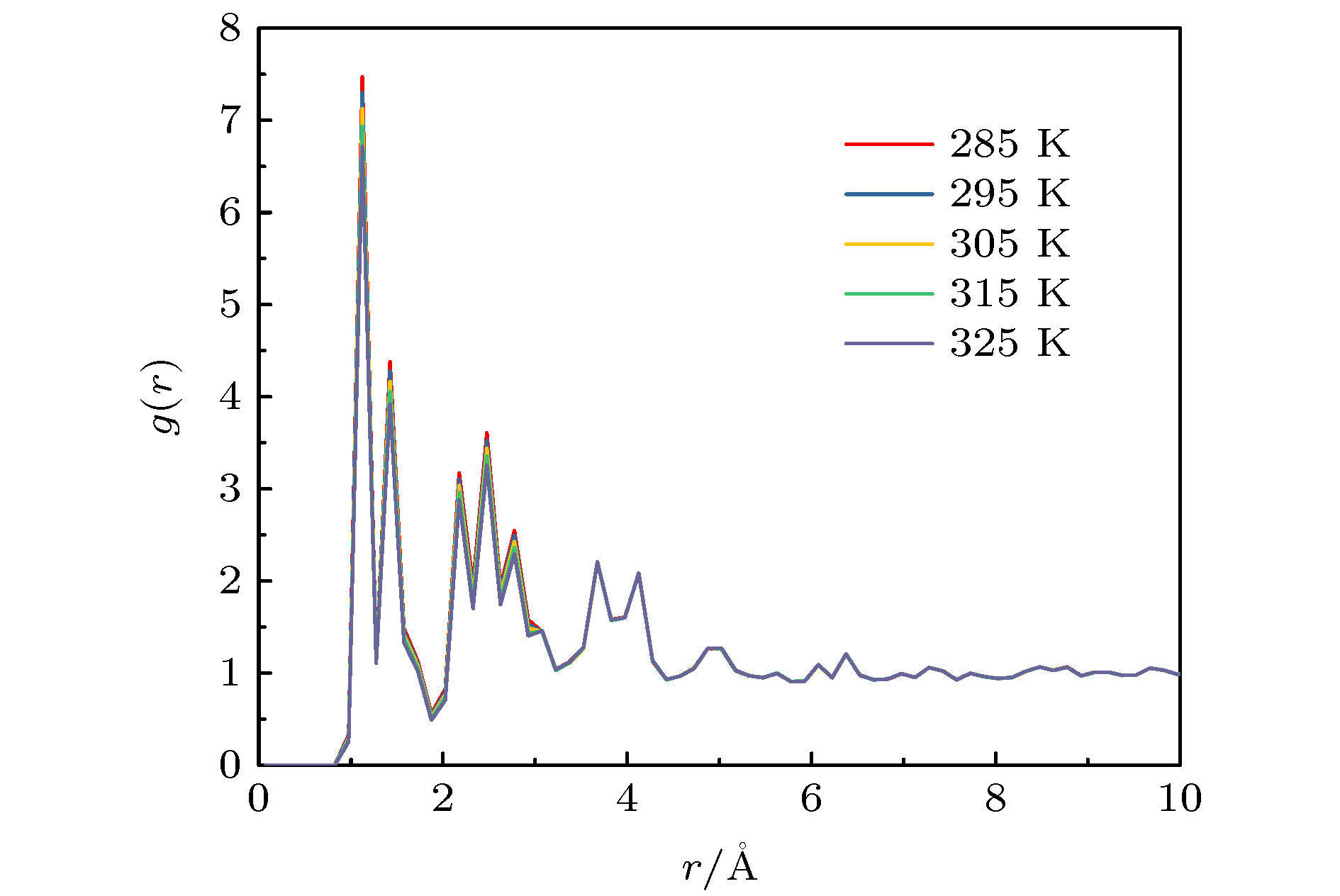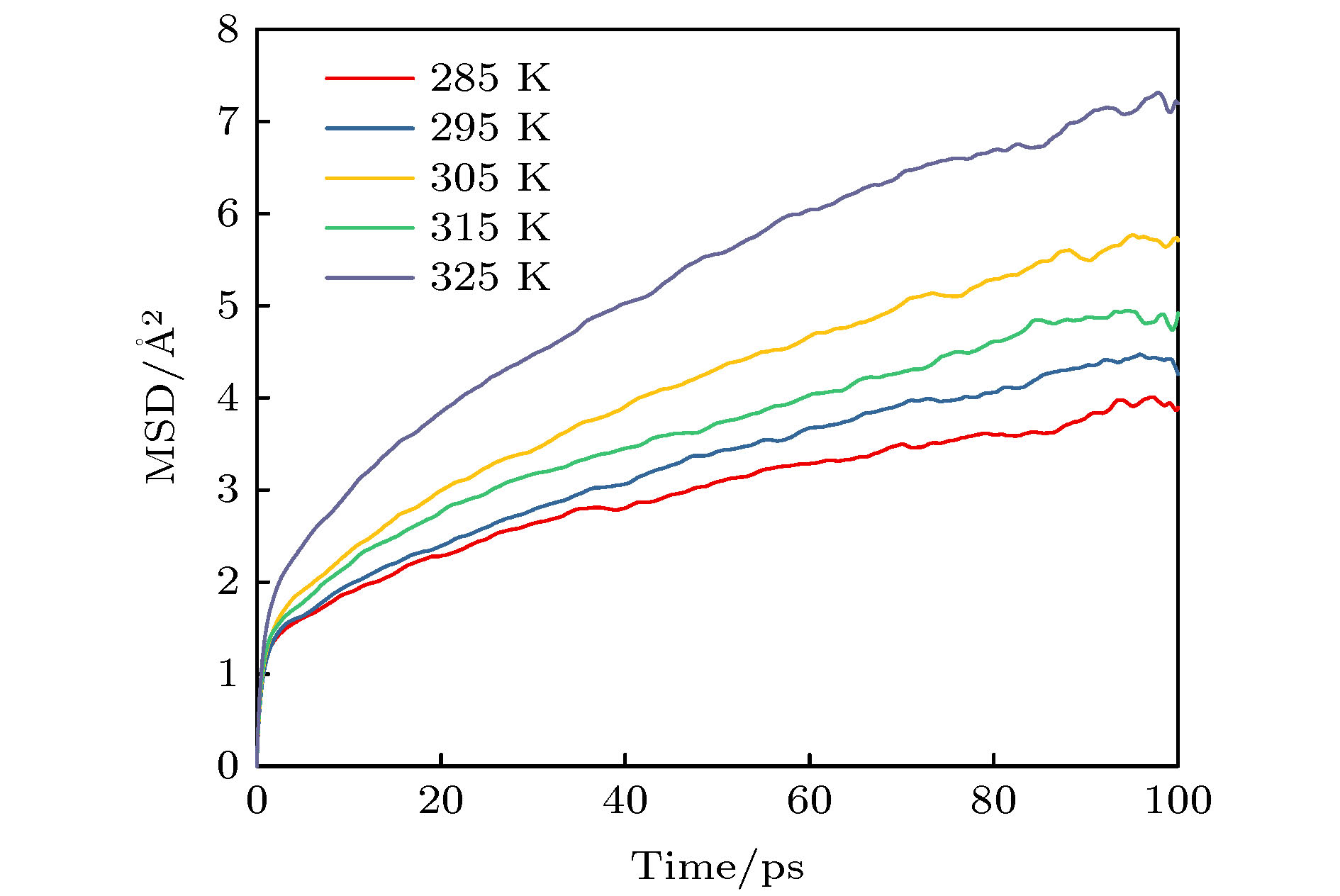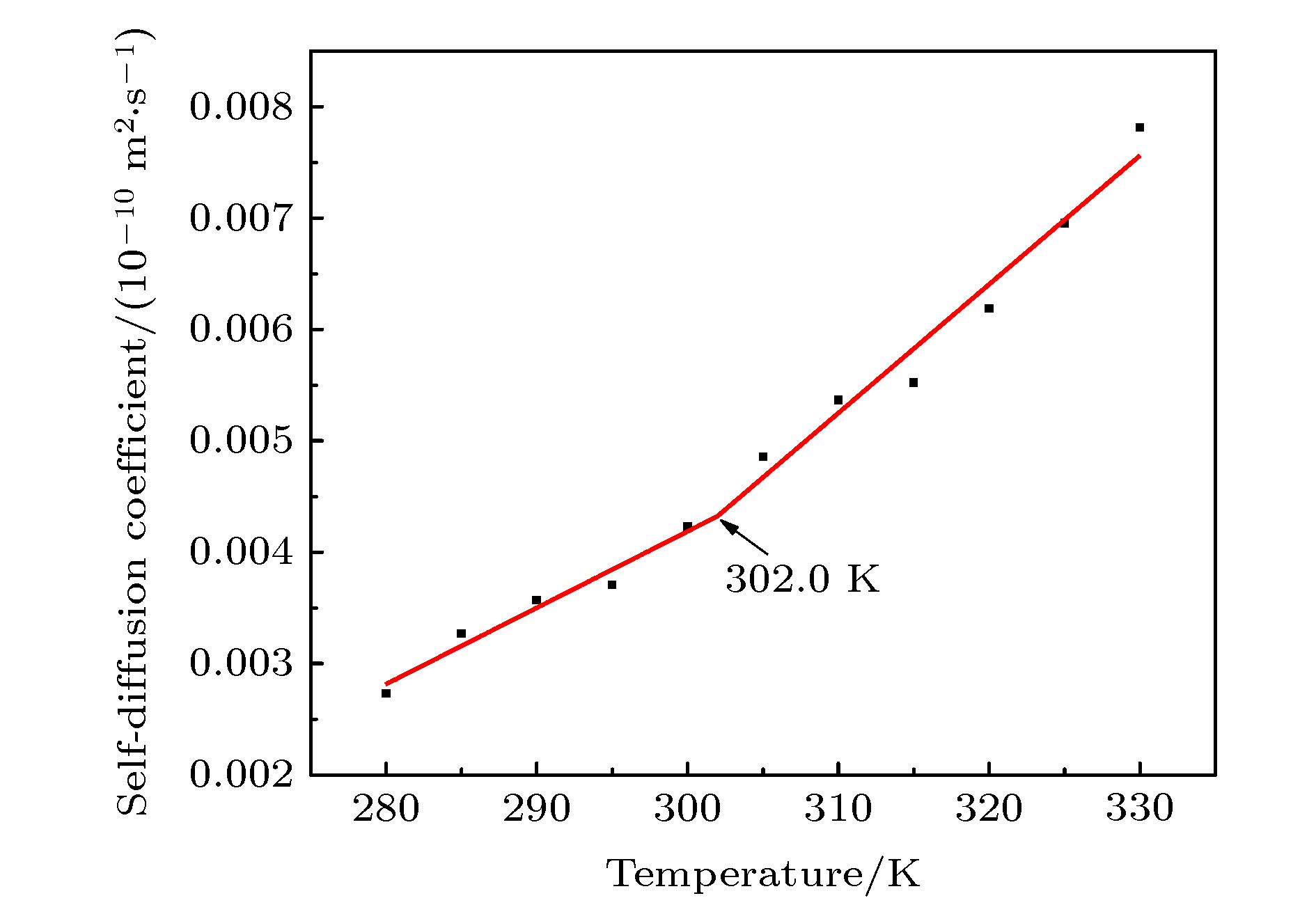-
Phase change materials can absorb, store and release heat with their latent heat capacity. Meanwhile, their temperature fluctuation during phase changing is small, so they can realize temperature control and be used for thermal management. But their low thermal conductivity and easy leakage problem seriously restrict their performance. Graphene aerogel have a large specific surface area because of its rich porous structure, and can absorb phase change materials to solve the leakage problem. Meanwhile, the high thermal conductivity of graphene can improve the thermal conductivity of phase change materials. At the same time, the black of graphene aerogel itself has good light absorption performance. Combined with phase change material, the resulting composite phase change material can make full use of the sunlight to achieve photo-thermal transformation and energy storage. Composite phase change material can release heat at night when there is no solar energy, making up for the intermittency of solar energy. Herein, graphene aerogel was prepared by reduction self-assembly and freeze-drying method, and composite phase change material was prepared by vacuum impregnation method. The graphene aerogel composite phase change materials with different mass fraction were prepared by using n-octadecane as phase change material. The thermal conductivity of the sample with 13.99 wt% graphene aerogel content was 306.2% higher than that of pure octadecane, and the latent heat of melting and solidification decreased by 13.8% and 10.8% respectively. Simultaneously, molecular dynamics simulation results show that the introduction of graphene aerogels will increase to a certain extent is octadecane molecular order and consistency, which in the same temperature of composite phase change materials are octadecane than pure octadecane molecules have more concentrated at the end of the distance and the torsion angle, radial distribution function and the diffusion coefficient is relatively low, that the introduction of graphene materials can promote positive octadecane coefficient of thermal conductivity.
-
Keywords:
- graphene aerogels /
- n-octadecane /
- thermophysical properties /
- molecular dynamics simulation
[1] Shon J, Kim H, Lee K 2014 Appl. Eenergy 113 680
 Google Scholar
Google Scholar
[2] Wu W, Zhang G, Ke X, Yang X, Wang Z, Liu C 2015 Energy Convers. Manage. 101 278
 Google Scholar
Google Scholar
[3] Ling Z, Wang F, Fang X, Gao X, Zhang Z 2015 Appl. Eenergy 148 403
 Google Scholar
Google Scholar
[4] Wu S, Li T, Tong Z, Chao J, Zhai T, Xu J, Yan T, Wu M, Xu Z, Bao H, Deng T, Wang R 2019 Adv. Mater. 31 1905099
 Google Scholar
Google Scholar
[5] Mu B, Li M 2019 Sol. Energy Mater. Sol. Cells 191 466
 Google Scholar
Google Scholar
[6] Liu L, Zheng K, Yan Y, Cai Z, Lin S, Hu X 2018 Sol. Energy Mater. Sol. Cells 185 487
 Google Scholar
Google Scholar
[7] Xue F, Jin X Z, Xie X, Qi X D, Yang J H, Wang Y 2019 Nanoscale 11 18691
 Google Scholar
Google Scholar
[8] Kabiri S, Tran D N H, Altalhi T, Losic D 2014 Carbon 80 523
 Google Scholar
Google Scholar
[9] Sang L, Xu Y 2020 J. Energy Storage 31 101611
 Google Scholar
Google Scholar
[10] Ma C, Zhang Y, Chen X, Song X, Tang K 2020 Materials 13 980
 Google Scholar
Google Scholar
[11] Li C, Zhao X, Zhang B, Xie B, He Z, Chen J, He J 2020 J. Therm. Sci. 29 492
 Google Scholar
Google Scholar
[12] Xu X, Hu R, Chen M, Dong J, Xiao B, Wang Q, Wang H 2020 Chem. Eng. J. 397
 Google Scholar
Google Scholar
[13] Zeng X, Sun J, Yao Y, Sun R, Xu J B, Wong C P 2017 ACS Nano 11 5167
 Google Scholar
Google Scholar
[14] Zhu X, Wang Q, Kang S, Li J, Jia X 2020 Chem. Eng. J. 395 125112
 Google Scholar
Google Scholar
[15] Sun H, Xu Z, Gao C 2013 Adv. Mater. 25 2554
 Google Scholar
Google Scholar
[16] Wang X, Nie S, Zhang P, Song L, Hu Y 2020 Jmr&T. 9 667
 Google Scholar
Google Scholar
[17] Yang J, Zhang E, Li X, Zhang Y, Qu J, Yu Z Z 2016 Carbon 98 50
 Google Scholar
Google Scholar
[18] Xu Y, Fleischer A S, Feng G 2017 Carbon 114 334
 Google Scholar
Google Scholar
[19] Wu H Y, Li S T, Shao Y W, Jin X Z, Qi X D, Yang J H, Zhou Z W, Wang Y 2020 Chem. Eng. J. 379 122373
 Google Scholar
Google Scholar
[20] Yan J, Qi G Q, Bao R Y, Yi K, Li M, Peng L, Cai Z, Yang M B, Wei D, Yang W 2018 Energy Storage Mater. 13 88
 Google Scholar
Google Scholar
[21] Li Y, Wei W, Wang Y, Kadhim N, Mei Y, Zhou Z 2019 J. Mater. Chem. C 7 11783
 Google Scholar
Google Scholar
[22] Liao H, Chen W, Liu Y, Wang Q 2020 Compos. Sci. Technol. 189 108010
 Google Scholar
Google Scholar
[23] Andersen H C 1980 J. Chem. Phys. 72 2384
 Google Scholar
Google Scholar
[24] Berendsen H J C, Postma J P M, Vangunsteren W F, Dinola A, Haak J R 1984 J. Chem. Phys. 81 3684
 Google Scholar
Google Scholar
[25] Sun H 1998 J. Phys. Chem. B 102 7338
 Google Scholar
Google Scholar
-
表 1 正十八烷及其复合相变材料熔化过程的相变温度及相变焓
Table 1. Phase transition temperature and enthalpy of n-octadecane and CPCMs during melting process.
测试对象 起始温度 峰值 终止温度 相变焓 Tms/℃ Tmp/℃ Tme/℃ Hm/J·g–1 正十八烷 24.6 28.6 34.9 232.0 GA1 24.6 28.3 34.8 220.5 GA2 24.3 28.6 34.5 213.1 GA3 24.4 28.4 34.2 207.9 GA4 24.2 28.7 34.2 199.9 表 2 正十八烷及其复合相变材料凝固过程的相变温度及相变焓
Table 2. Phase transition temperature and enthalpy of n-octadecane and CPCMs during solidification process.
测试对象 起始温度 峰值 终止温度 相变焓 Tss/℃ Tsp/℃ Tse/℃ Hs/J·g–1 正十八烷 27.8 26.9 23.2 –225.8 GA1 27.6 27.3 24.1 –214.6 GA2 28.3 27.6 24.2 –206.6 GA3 27.9 27.2 24.4 –202.2 GA4 28.2 27.0 24.1 –201.4 表 3 正十八烷及石墨烯气凝胶复合相变材料的导热系数及相关数据
Table 3. Thermal conductivity and relevant data of n-octadecane and CPCM.
测试
对象热扩散
系数
α/mm2·s–1密度
${ {\rho} }_{\text{com} }$/
g·cm–3比热容
cp/
J·(g·K) –1导热系数
$ \text{λ} $/
W·(m·K) –1正十
八烷0.137 0.777 1.658 0.177 GA1 0.331 0.782 1.871 0.484 GA2 0.349 0.780 1.878 0.511 GA3 0.374 0.787 1.910 0.562 GA4 0.461 0.789 1.977 0.719 -
[1] Shon J, Kim H, Lee K 2014 Appl. Eenergy 113 680
 Google Scholar
Google Scholar
[2] Wu W, Zhang G, Ke X, Yang X, Wang Z, Liu C 2015 Energy Convers. Manage. 101 278
 Google Scholar
Google Scholar
[3] Ling Z, Wang F, Fang X, Gao X, Zhang Z 2015 Appl. Eenergy 148 403
 Google Scholar
Google Scholar
[4] Wu S, Li T, Tong Z, Chao J, Zhai T, Xu J, Yan T, Wu M, Xu Z, Bao H, Deng T, Wang R 2019 Adv. Mater. 31 1905099
 Google Scholar
Google Scholar
[5] Mu B, Li M 2019 Sol. Energy Mater. Sol. Cells 191 466
 Google Scholar
Google Scholar
[6] Liu L, Zheng K, Yan Y, Cai Z, Lin S, Hu X 2018 Sol. Energy Mater. Sol. Cells 185 487
 Google Scholar
Google Scholar
[7] Xue F, Jin X Z, Xie X, Qi X D, Yang J H, Wang Y 2019 Nanoscale 11 18691
 Google Scholar
Google Scholar
[8] Kabiri S, Tran D N H, Altalhi T, Losic D 2014 Carbon 80 523
 Google Scholar
Google Scholar
[9] Sang L, Xu Y 2020 J. Energy Storage 31 101611
 Google Scholar
Google Scholar
[10] Ma C, Zhang Y, Chen X, Song X, Tang K 2020 Materials 13 980
 Google Scholar
Google Scholar
[11] Li C, Zhao X, Zhang B, Xie B, He Z, Chen J, He J 2020 J. Therm. Sci. 29 492
 Google Scholar
Google Scholar
[12] Xu X, Hu R, Chen M, Dong J, Xiao B, Wang Q, Wang H 2020 Chem. Eng. J. 397
 Google Scholar
Google Scholar
[13] Zeng X, Sun J, Yao Y, Sun R, Xu J B, Wong C P 2017 ACS Nano 11 5167
 Google Scholar
Google Scholar
[14] Zhu X, Wang Q, Kang S, Li J, Jia X 2020 Chem. Eng. J. 395 125112
 Google Scholar
Google Scholar
[15] Sun H, Xu Z, Gao C 2013 Adv. Mater. 25 2554
 Google Scholar
Google Scholar
[16] Wang X, Nie S, Zhang P, Song L, Hu Y 2020 Jmr&T. 9 667
 Google Scholar
Google Scholar
[17] Yang J, Zhang E, Li X, Zhang Y, Qu J, Yu Z Z 2016 Carbon 98 50
 Google Scholar
Google Scholar
[18] Xu Y, Fleischer A S, Feng G 2017 Carbon 114 334
 Google Scholar
Google Scholar
[19] Wu H Y, Li S T, Shao Y W, Jin X Z, Qi X D, Yang J H, Zhou Z W, Wang Y 2020 Chem. Eng. J. 379 122373
 Google Scholar
Google Scholar
[20] Yan J, Qi G Q, Bao R Y, Yi K, Li M, Peng L, Cai Z, Yang M B, Wei D, Yang W 2018 Energy Storage Mater. 13 88
 Google Scholar
Google Scholar
[21] Li Y, Wei W, Wang Y, Kadhim N, Mei Y, Zhou Z 2019 J. Mater. Chem. C 7 11783
 Google Scholar
Google Scholar
[22] Liao H, Chen W, Liu Y, Wang Q 2020 Compos. Sci. Technol. 189 108010
 Google Scholar
Google Scholar
[23] Andersen H C 1980 J. Chem. Phys. 72 2384
 Google Scholar
Google Scholar
[24] Berendsen H J C, Postma J P M, Vangunsteren W F, Dinola A, Haak J R 1984 J. Chem. Phys. 81 3684
 Google Scholar
Google Scholar
[25] Sun H 1998 J. Phys. Chem. B 102 7338
 Google Scholar
Google Scholar
Catalog
Metrics
- Abstract views: 13616
- PDF Downloads: 266
- Cited By: 0















 DownLoad:
DownLoad:

